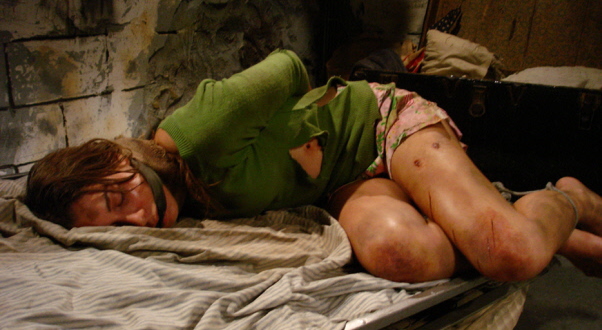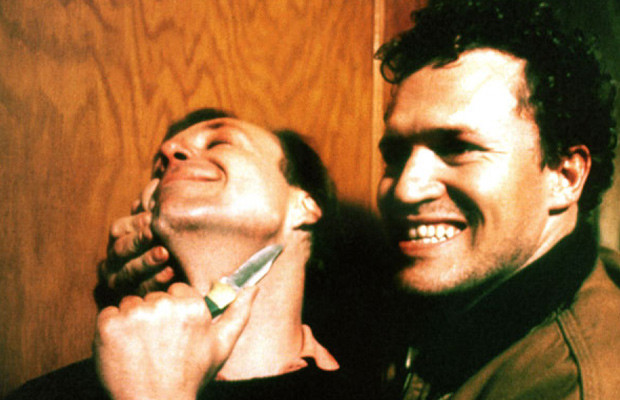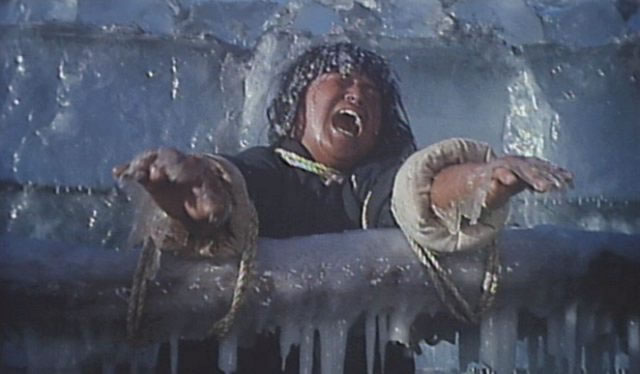5. Badlands
While Terence Malick is both praised and derided for his ability as a director, Badlands (his first and most well-liked film) is undeniably effective. Based on the murders committed by Charles Starkweather and Caril Fugate that shocked and repulsed the U.S. in the late 50s, the film concerns a young couple and the wake of death and violence they leave behind.
It takes a divergent approach to the deadly couple on the run story, as typified by movies like Bonnie and Clyde and Natural Born Killers (which was also loosely based on the Starkweather/Fugate crimes).
As Holly, Sissy Spacek exudes a child-like quality, while Martin Sheen’s Kit is a blustering and suave pseudo-cowboy. Their pairing appears far more innocent than their criminal lifestyle suggests, particularly during the sequence just after Kit murders Holly’s father as a reprisal for his attempts to keep them apart.
Taking to the wilderness, they create a sort of treetop paradise replete with creature comforts and amenities, until they’re discovered by local law enforcement. They are driven from place to place with minimal reaction from Holly, while Kit explains away his violence as a continued attempt at survival.
For a film about murder, Badlands is surprisingly charming. Once the pair is finally apprehended, Kit is treated fondly by his arresting officers as they compare him to James Dean and offer well-wishes as he is being extradited back to his home state. He even apologizes for the murder of Holly’s father which kicked off the violence, which is met with a shrug.
The lack of discernible emotion doesn’t render the film depraved; instead it’s more of an indication that the characters are resigned to their fate, as though there was no other path for them to take.
4. The Girl Next Door

Author Jack Ketcum claimed that his 1989 novel The Girl Next Door was based on a newspaper article he once read. It described the murder of Sylvia Likens, who was tortured and ultimately murdered by her caretakers, as well as a few neighborhood children. The film focuses on the same events and shows how child abuse can be normalized within families until it escalates into tragedy.
After the death of their parents, sisters Susan and Meg are sent to live with their alcoholic aunt Ruth and her three sons. David, a neighbor of the family, immediately takes a liking to Meg and serves as a witness to her abuse throughout the film.
Ruth is popular among local kids due to her freewheeling nature and habit of sharing her endless supply of beer. As a result, many are willing to overlook her treatment of Meg, which includes starvation, beatings, and emotional and sexual abuse.
While the film is in no way masterful, it is disturbing for its depiction of abuse and the age of the victims. It shows that getting help in these situations is not always cut and dry.
Meg eventually solicits the assistance of a police officer, which only adds to her abuse. It also shows how even “good” people can be reluctant to intervene. David knows that what’s occurring to Meg is wrong, but he has trouble communicating this to anyone, including his parents.
3. Compliance

It seems to too insane to be true; a fast food restaurant manager (played by Ann Dowd of True Detective and The Leftovers) is commanded by a shadowy voice on the phone, which leads to a young woman’s degradation and eventual sexual assault.
This is the story of Compliance, a film based on a real life incident where a fiendish prank caller convinced restaurant employees to detain and abuse a fellow worker based on false accusations of theft and drug possession.
Both in the film and the real life incident, the caller’s commands become increasingly more debauched. The worker is stripped of her clothing and forced to do jumping jacks in the nude in a misguided search for contraband.
Other employees come and go as the restaurant becomes increasingly busier, until the worker is finally left in the care of the manager’s fiancé. He is most susceptible to the caller’s influence, and forces the worker to perform oral sex against her will.
Despite the unbelievable nature of the story, the film is able to illustrate events in a realistic way. Dowd is excellent in her portrayal of the myopic manager, who is so accustomed to following directives that she fails to consider of the absurdity of the requests being made. It’s particular horrifying to consider that these crimes transpired in such a seemingly innocuous place, just a few feet away from customers enjoying their meals.
2. Henry: Portrait of a Serial Killer

Loosely based on the crimes of two serial killers (Ottis Toole and Henry Lee Lucas), Henry: Portrait of a Serial Killer features acclaimed character actor Michael Rooker in the title role. During his travels, Henry meets up with Otis (played by Tom Towles) and Otis’s sister Becky.
Upon discovering Henry’s deadly proclivities, Otis elects to participate in the murders under Henry’s tutelage. While their pairing leads to more deaths, Henry eventually grows tired of Otis’s careless nature. He is also made uncomfortable by Becky’s romantic overtures, which underscores just how truly dysfunctional he is.
While the movie doesn’t exactly strive to show Henry in a sympathetic light, Rooker’s performance does elicits compassion for what is a genuinely repugnant character.
You get the impression that Henry’s impulses simply can’t be stopped, despite the havoc they wreak on himself and those around him. This is especially evident in his interactions with Becky, a sweet girl who has also suffered from abuse at the hands of family (Henry’s initial murder was of his abusive mother).
Even for a movie based on a pair of serial killers, the tone is exceedingly bleak. There doesn’t seem to be any hope for anyone, even the angelically pure Becky. The violence, while startling, could have been portrayed far more graphically (which tends to take a bit of the sting out of it). This emphasis on realism renders the film disturbing all these years later, and shows just how the depravity of man can take shape.
1. Men Behind the Sun

While movies focusing on WWII abound, very few offer a perspective from behind enemy lines. Men Behind the Sun does exactly that, focusing on the war crimes committed by the Japanese Unit 731.
Much like the gruesome and cruel medical experiments performed by German doctors within Nazi concentration camps, Unit 731 was tasked with the torture of numerous subjects all under the goal of collecting scientific data on biological warfare methods.
It’s hard to fathom that these events actually occurred due to their horrific nature. Prisoners are subjected to a range of increasingly gruesome experiments, all of which seem conceived out of sheer sadism.
The fact that they are performed with an unfeeling and cold nature only adds to the misery and horror surrounding the victims. The film doesn’t shy away from showing every detail of the torturous experiments, and as a result has been met with a fair amount of controversy around the word.
While director T. F. Mou aimed to show the horrors meted out to Chinese prisoners at the hands of the Japanese, many accused him of simply using a historical back drop to create an exploitation film. However, Unit 731 was notorious for performing a multitude of experiments (including those depicted in the film) on thousands of victims.
Even more disturbing, lead surgeon Shiro Ishii actually received immunity for the war crimes he committed at the urging of the U.S., who termed the biological warfare data he collected as “invaluable”.
Author Bio: Eustacia Adams is a drinker with a writing problem. She has a degree in film theory and likes to annoy people with her meticulous knowledge of B-movie actors.